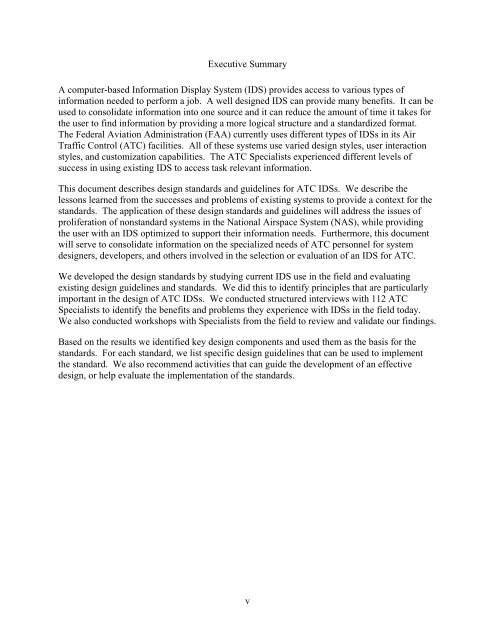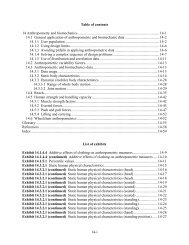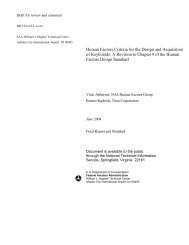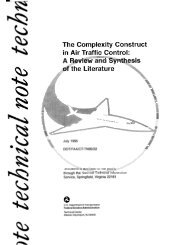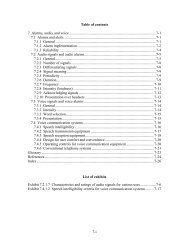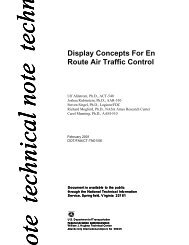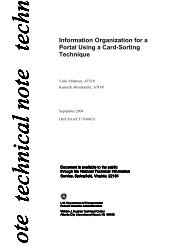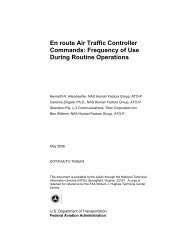Design of information Display Systems for Air Traffic Control - FAA
Design of information Display Systems for Air Traffic Control - FAA
Design of information Display Systems for Air Traffic Control - FAA
Create successful ePaper yourself
Turn your PDF publications into a flip-book with our unique Google optimized e-Paper software.
Executive Summary<br />
A computer-based In<strong>for</strong>mation <strong>Display</strong> System (IDS) provides access to various types <strong>of</strong><br />
<strong>in<strong>for</strong>mation</strong> needed to per<strong>for</strong>m a job. A well designed IDS can provide many benefits. It can be<br />
used to consolidate <strong>in<strong>for</strong>mation</strong> into one source and it can reduce the amount <strong>of</strong> time it takes <strong>for</strong><br />
the user to find <strong>in<strong>for</strong>mation</strong> by providing a more logical structure and a standardized <strong>for</strong>mat.<br />
The Federal Aviation Administration (<strong>FAA</strong>) currently uses different types <strong>of</strong> IDSs in its <strong>Air</strong><br />
<strong>Traffic</strong> <strong>Control</strong> (ATC) facilities. All <strong>of</strong> these systems use varied design styles, user interaction<br />
styles, and customization capabilities. The ATC Specialists experienced different levels <strong>of</strong><br />
success in using existing IDS to access task relevant <strong>in<strong>for</strong>mation</strong>.<br />
This document describes design standards and guidelines <strong>for</strong> ATC IDSs. We describe the<br />
lessons learned from the successes and problems <strong>of</strong> existing systems to provide a context <strong>for</strong> the<br />
standards. The application <strong>of</strong> these design standards and guidelines will address the issues <strong>of</strong><br />
proliferation <strong>of</strong> nonstandard systems in the National <strong>Air</strong>space System (NAS), while providing<br />
the user with an IDS optimized to support their <strong>in<strong>for</strong>mation</strong> needs. Furthermore, this document<br />
will serve to consolidate <strong>in<strong>for</strong>mation</strong> on the specialized needs <strong>of</strong> ATC personnel <strong>for</strong> system<br />
designers, developers, and others involved in the selection or evaluation <strong>of</strong> an IDS <strong>for</strong> ATC.<br />
We developed the design standards by studying current IDS use in the field and evaluating<br />
existing design guidelines and standards. We did this to identify principles that are particularly<br />
important in the design <strong>of</strong> ATC IDSs. We conducted structured interviews with 112 ATC<br />
Specialists to identify the benefits and problems they experience with IDSs in the field today.<br />
We also conducted workshops with Specialists from the field to review and validate our findings.<br />
Based on the results we identified key design components and used them as the basis <strong>for</strong> the<br />
standards. For each standard, we list specific design guidelines that can be used to implement<br />
the standard. We also recommend activities that can guide the development <strong>of</strong> an effective<br />
design, or help evaluate the implementation <strong>of</strong> the standards.<br />
v


